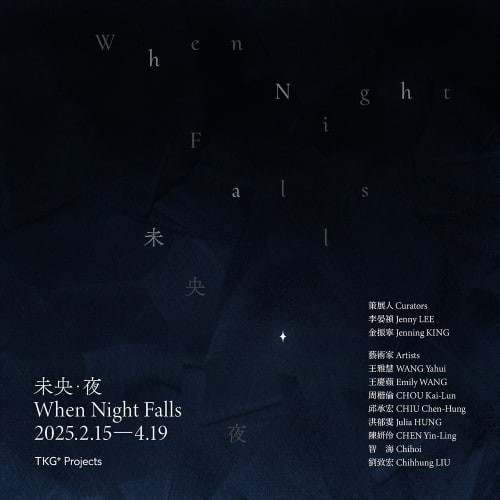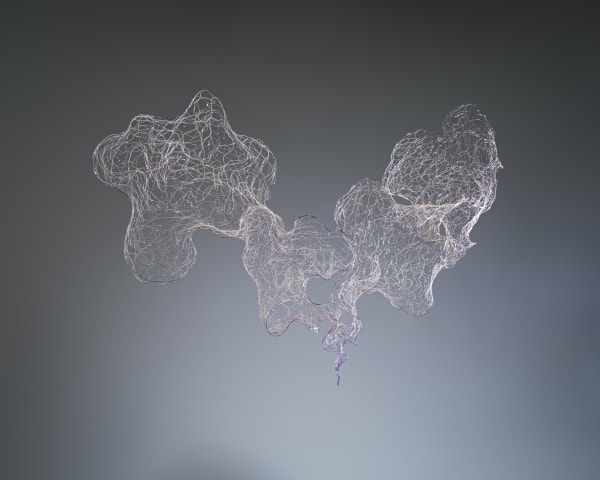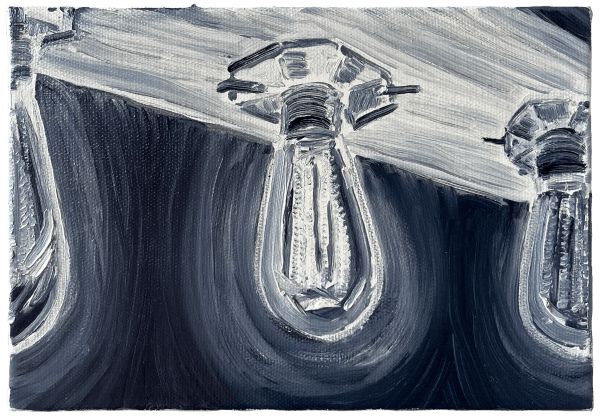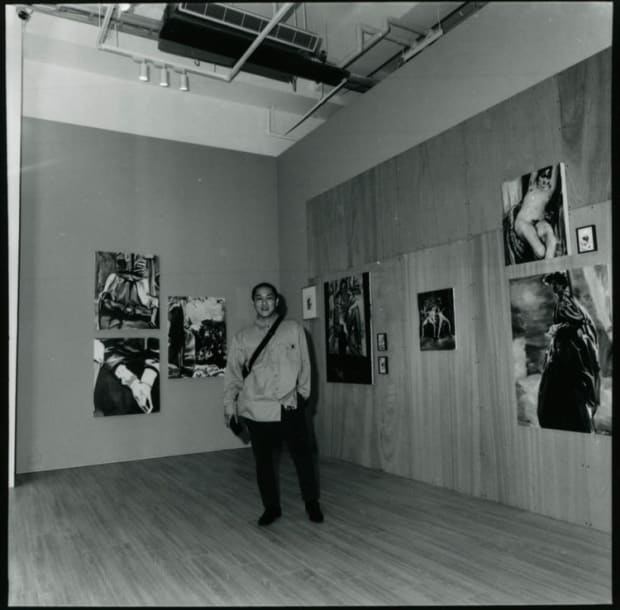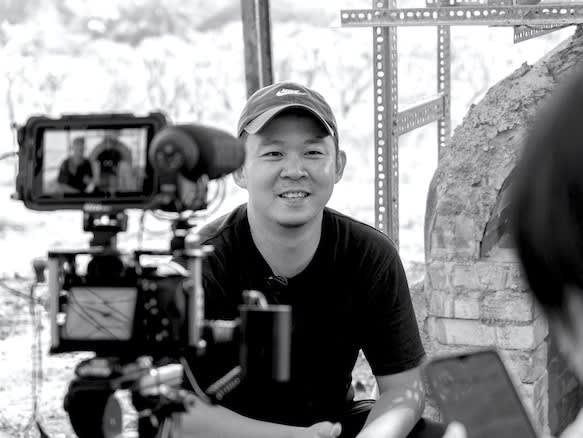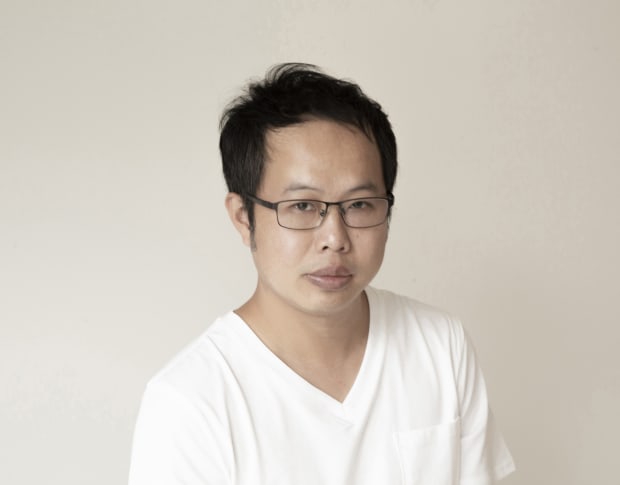When Night Falls: Curated by Jenning KING, Jenny LEE
-
Overview
Dates
02.15-04.19.2025
Reception
02.15.2025 (SAT.) 4:30 P.M.
Venue
TKG+ Projects 2F, No. 15, Ln. 548, Ruiguang Rd., Neihu Dist., Taipei, Taiwan
If sunrise opens our eyes to the world around us, our gaze turns inward to our inner selves when night falls. “Night, as a pure depth, has no sides. It envelops us, making us aware of our fragility, drawing us back to a primal realm of experience that escapes the structured order of daylight,” writes WU Yu in the preface to Night: Philosophy After Dark (by Jason Bahbak Mohaghegh). As the sun sinks below the horizon, the weight and structure of the day begin to wane. By midnight, silence thickens, darkness engulfs all, and time seems to hold its breath. For some, however, this is the hour of awakening. They engage in quiet conversations with their souls in the stillness of the night or unearth metaphors that mirror reality in their dreams. Meanwhile, night wanderers drift beneath an Impressionist sky, moving endlessly and aimlessly to fill the sleepless hours.
-
This is an exhibition about the night—a time and space where thoughts, emotions, and desires quietly shimmer. Eight artists share their reflections: “Julia HUNG–Wisps and Whispers,” “CHOU Kai-Lun–In Faint Light,” “Emily WANG—Rehearsal in Liminality,” “WANG Yahui–A Poem,” “CHEN Yin Ling—The Quiet Eye,” “Chihhung LIU–Placebo,” “CHIU Chen-Hung–Night and Soul,” and “Chihoi–Halogen: The Pearl.” Their visions are stars flickering in a darkened vault beyond the reach of searchlights—a constellation of whispers that echo across eons.
-
-
Julia HUNG–Wisps and Whispers
I imagine the night as I weave, with threads as delicate as drifting mist. Suspended in the still air, they form tiny universes cloaked in darkness, where they are both observers and observed.
Darkness softens everything it touches, while silence sharpens the subtlest details and thoughts.
Light fades into a pale brilliance, softly illuminating the flow of time.
In the shadows, all things merge and silently transform, and the rhythms of life are hidden, inaudible.
The boundaries between dream and reality, presence and absence, blur and nearly diffuse. In the depths of darkness, when time feels frozen, it seems to cradle eternity—yet these universes slip away like phantoms, vanishing as quickly as they appear.
CHOU Kai-Lun–In Faint Light
My negatives are the daily footprints of my life—a quiet record of my existence.
Beyond photography, spouts of inspiration often lead me to pick up a pencil and draw from life. Or in my studio, I could be reinterpreting photographs through painting, infusing them with emotion and subjectivity, or transforming negatives into works that hover between painting and photography—neither fully one nor the other, yet somehow both.
This process of revisiting and reworking images allows me to focus on self-consciousness while questioning the role of the “artist” in a modern world shaped by progress and unseen systems of control.
I seek to capture fleeting, unique, and repeatable moments, striving to find a delicate balance between myself and the world—not too much, not too little, but just enough.
Emily WANG—Rehearsal in Liminality
I’m in a phase of transition, a liminal space. It is a time of waiting, and creating is like dreaming with eyes wide open.
The pictorial space is a magnetic field, where the tangible and the elusive collide and coalesce. Of forms invoked and morphed into new beings, I glimpse. Emerging from the depths of my psyche, an invisible forest, they are what they seem and also something else, beastly but soulful.
WANG Yahui–A Poem
One day, I pulled a bilingual Japanese-English poetry collection by Shuntaro Tanikawa off my shelf—a book I’d bought years ago in Japan. Flipping through its familiar pages, I stopped at a facsimile of a handwritten draft from his notebook. I had seen it many times before, but something about it was suddenly arresting, as though an unnoticed feeling had surfaced. A few days later, I placed the open page on a slightly dusty black tablecloth in my studio. At that instant, an image miraculously unfolded—time seemed to bend and loop back on itself.
The photograph of that instant became an element of a sculpture, somehow blending with real-world objects to form a unified whole. But this was not merely about arranging different forms of objects to please the eye. It prompted me to ponder: How do we perceive the objects around us? How does gravity shape their forms? How does time leave its subtle traces in motion? How do images exist between memory and vision, and how does movement—or even a gaze—interact with them? Textures, too, come into play—rough or reflective, smooth or solid—alongside the quiet biases we bring to what we see. Within these layered reflections is a world where we are no longer passive observers but part of its fabric.
Finding ways to bring these elements together is not easy. It is as elusive as identifying a new star in the vast blackness of night. Assumptions and preconceptions shape our understanding of the world, yet it is in this uncertain space where possibilities thrive.
-
-
CHEN Yin-Ling—The Quiet Eye
This is a story about a voyeur and the ones being observed.
What fascinates me most about the night is the stories that unfold once the night falls and the lights are on. Inside my own room, I become a voyeur. This feeling reminds me of Andreas Gursky’s Paris, Montparnasse and Romain Jacquet-Lagrèze’s Concrete Stories II, where every small window in the frame stirs up an endless curiosity: What is happening inside those rooms?
In He Chao-ti’s documentary The Sleep Goddess, I sense the suffocating feeling of people who, during the day, are too caught up in the rush of life to think, only to face their fears and restlessness at night, unable to sleep. In the end, each person falls into solitary slumber.
I magnify every lit window, peering into others’ lives, but in doing so, I also place a piece of myself within them. The night makes you let your guard down, shedding the armor of the day, leaving only the fatigue and waiting for the dawn to come, over and over again, day after day.
Chihhung LIU–Placebo
When night falls, the sea seems to draw closer. No matter the season or the weather—spring’s gentle warmth, winter’s sharp bite, rain or clear skies—I climb onto my good old manual bike, strap on my helmet, ignite the engine, and rev, eager to follow the curves of the coastline. I am a chef, meticulously tending to each step of a recipe:
Traffic islands glow with the flicker of decorative lights, their tungsten bulbs smoldering like the slow burn of a Maillard reaction. A drizzle falls, sprinkling salt into the briny air. Steam rises from the slopes of Yangmingshan, while banyan and palm leaves, kissed by the mist, flash their greens—crisp, vivid, alive. Along the seawall, fishermen cast their lines into the night, scattering flecks of red, yellow, orange, and green like embers drifting on a breeze.
As the night simmers, the sea becomes my placebo, or a fragrant and unforgettable elixir, beckoning my return time after time.
CHIU Chen-Hung–Night and Soul
This is a “restoration project,” my attempt to fill the void left by something lost in a dream. From the wreckage of earthquake disasters, I collect fragments of destruction—twisted rebar, shattered concrete—and turn them into a sculpture in the form of a bookshelf and its books. I carve marks within the cracks and fractures inspired by my observations of the world around me. These carvings become indexes, capturing the murmurs and fragments of memories from the dream while reflecting traces of reality.
In the dream, I stand on a familiar seashore. Ahead lies an immense, unfathomable darkness, vast and still, like a giant eye silently watching the water’s surface. Images begin to rise from the depths—fragments of memories carried by the resounding waves and widening ripples. Slowly, these fragments coalesce into a single moonlit shadow—fragile, quiet, and profound.
That vision brings to mind Jorge Luis Borges’ The Moon, gleaming like a polished mirror, heavy with the tears of generations who have gazed upon it. It feels like a sanctuary in a parallel universe, a place that gathers all that has come unmoored and all that slips away when their anchor is lost.
Chihoi–Halogen: The Pearl
“Halogen” is a painting series I began in 2022. It draws inspiration from my collection of vintage Hong Kong slides. Captured in the 1960s and 70s, these slides document the city’s landmarks but have since faded; their colors have softened to a reddish monochrome. In my studio, I project these images onto the walls and replicate them as they are–long-gone times and sometimes places I have never experienced and never will. The resulting oil paintings are then converted back into slides and projected anew.
Entitled “Halogen: The Pearl,” the work lingers on the nightscapes of old Hong Kong, a long look at the city’s past brilliance when it was still the “Pearl of the Orient.”
-

Courtesy of the artist.
-

Courtesy of the artist.
-

Courtesy of the artist.
-

Courtesy of the artist.
-

Courtesy of the artist.
-

Courtesy of the artist.
-

Courtesy of the artist.
-

Courtesy of the artist.

